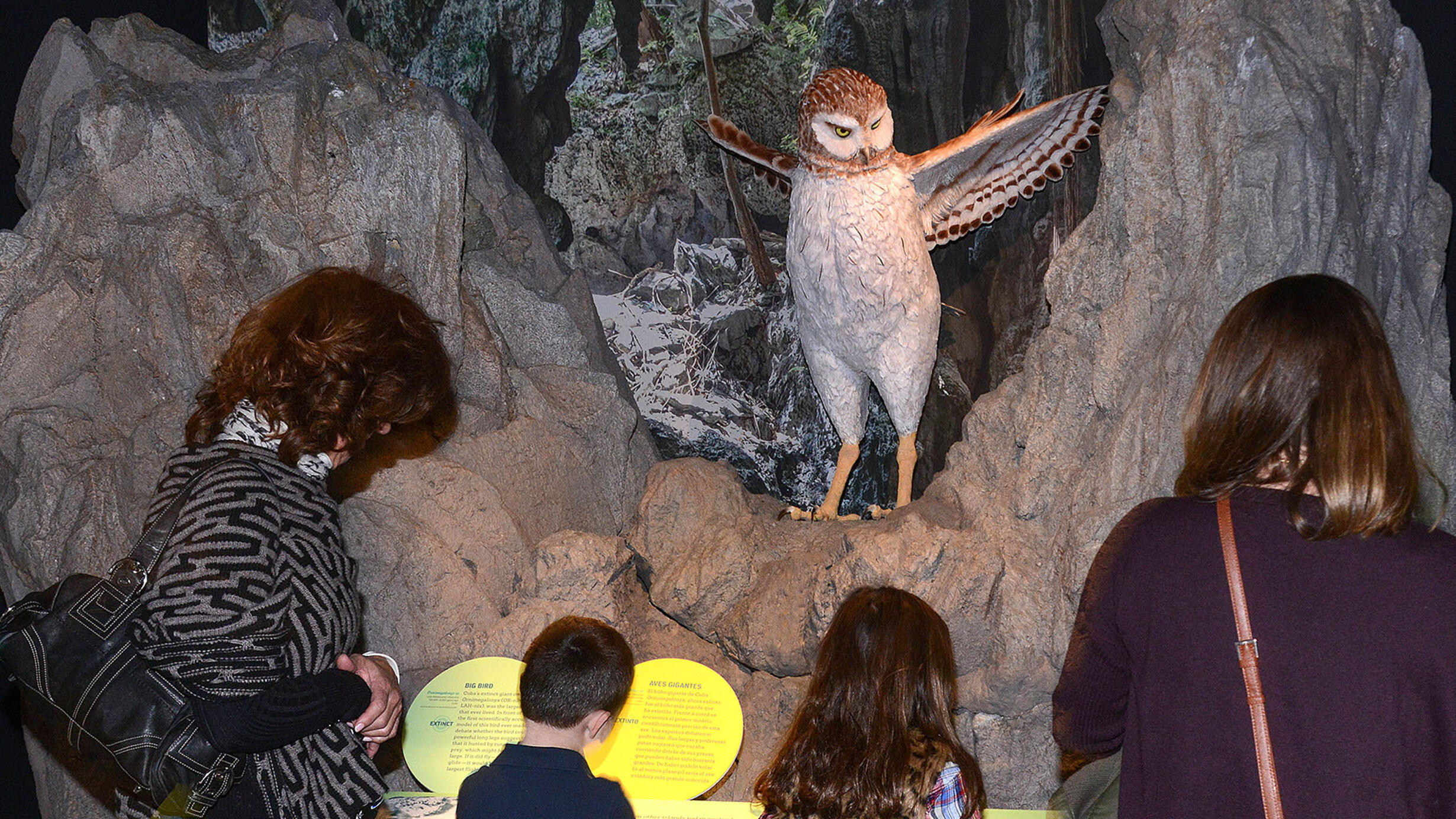Cuba's Caves
Part of the ¡Cuba! exhibition.
 Museum visitors view a model of Ornimegalonyx on display in the !Cuba! exhibit.
Museum visitors view a model of Ornimegalonyx on display in the !Cuba! exhibit.©AMNH/R. Mickens
Uncovering the Past
Cuba is honeycombed with caves, created over millions of years as water dissolved underground limestone. Hidden from view, shielded from the elements, caves harbor tantalizing traces of Cuba’s past.
Wall paintings, graves and artifacts record the lives of the earliest First Nations peoples, who hid cherished objects in caves and used them as ritual spaces. And much deeper in time, fossils reveal that giant animals once roamed the island.
Hot Caves
Many Cuban bats roost in so-called hot caves during the day. Often poorly ventilated, domed chambers with small entrances, hot caves may house millions of bats. The combined warmth of all those bodies, plus the heat produced by decomposing bat waste, or guano, creates temperatures that may reach 104o F (40o C) and humidity that may reach 98%.
© M.D. Tuttle/Science Source
The First Cubans
Although the written record of Cuba’s people begins in 1492, its caves reveal evidence of a human prehistory thousands of years long. Caves sometimes sheltered those early Cubans, and cave sediments have preserved traces of their activities.
Scientists think people came to the island in a number of waves, starting 6,000 or more years ago. The early Cubans likely hunted, using large stone artifacts, and fished; later arrivals farmed and brought their own ceramic and stone-working traditions. These peoples may have had their origins in Central America, in South America, or even North America.
© D. Agostini/AGE Fotostock
Prehistoric Animals
The remains of land animals tend to disappear quickly on tropical islands, but caves often preserve them. Cave deposits reveal many unique land animals in Cuba, some of which are now extinct. How did the ancestors of those ancient creatures get there?
Perhaps by swimming or flying to ancient landmasses that served as stepping stones from the mainland to Cuba, or using floating rafts–mats of mainland vegetation broken off from riverbanks or the coast by floods or storms.
Cuba's Fossil Birds
The animals we see in Cuba and on other islands today evolved from species that arrived from a nearby continent. But not every mainland animal makes it over. For instance, large mammalian predators seldom reach islands. Birds, on the other hand, often do. In ancient Cuba, the role of top predator was played not by a mammal, but by…Great birds!
© AMNH/R. Mickens
Check out more of the exhibition—explore Cuba's Coral Reefs.
Top photo: ©AMNH/R. Mickens